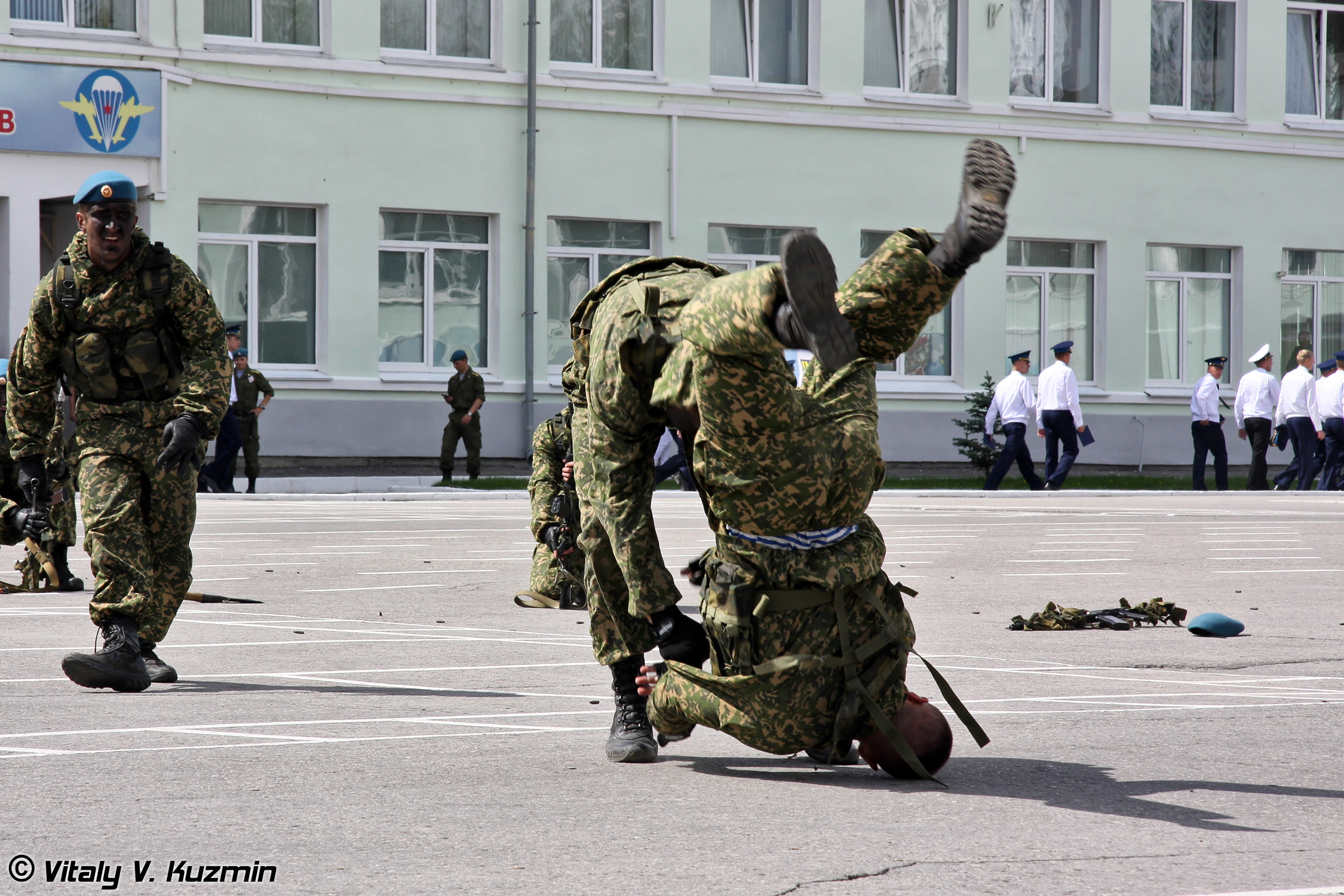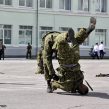
Russia Introduces a Trickle of ‘New Look’ Professional NCOs
Publication: Eurasia Daily Monitor Volume: 10 Issue: 11
By:

In late November 2012, following the successful completion of an elite course for professional non-commissioned officers (NCOs) lasting two years and ten months, the first graduates emerged from the Ryazan Higher Airborne Command School (RVVDKU) NCO Training Center. Among the 175 graduates, 51 were sent into the elite airborne forces (VDV) and the others are being introduced into all branches and arms of service in the Armed Forces (www.mil.ru, January 17). Five hundred cadets are currently studying at the NCO Training Center and 124 are expected to graduate later this year. Commanders will be interested to scrutinize these first “new look” NCOs in order to learn whether they represent a real improvement on existing approaches to educating and training these junior leaders.
The NCO Training Center instructs specialists in four main specialties: motor transport servicing and maintenance; radio communications; radio broadcasting and television; as well as multi-channel telecommunications systems and communications networks and switching systems. In turn these NCOs also adopt military registration specialties. Consequently, there are nine military registration specialties: maintenance and repair of motor vehicle transportation; combined-arms specialists; parachute subunit specialists; airborne service specialists; tactical reconnaissance specialists; reconnaissance specialists (special purpose military units); and combined-arms specialists designated to fill “repair platoon leader” posts, “motor vehicle platoon leader,” or “support platoon leader” (www.mil.ru, November 17, 2012).
In the fall of 2009, the process of selecting students for the first professional NCO courses at Ryazan began in earnest. Despite the high expectations of the defense ministry, which had aimed at commencing the first course with around 2,000 cadets, only 241 matriculated of which 66 were later dismissed from the course for various reasons. The selection criteria were rigid, recruiting exclusively contract soldiers (kontraktniki) aged 19–35 who had served for a minimum of one year and who agreed to sign a new contract for five years. According to the NCO Training Center’s Chief, Lieutenant-Colonel Roman Strakov, the first batch of professional NCOs were also sent to special purpose units in the non-defense ministry power ministries, thus reducing the numbers received into the Armed Forces (Krasnaya Zvezda, November 29, 2012).
Starkov believes, however, that these “new look” NCOs are of much higher quality: “This is a sergeant, who was trained for nearly three years in the walls of the airborne school, where the primary principle of study is closely associated with the ideology of the airborne troops, and their famous motto ‘No one, besides us.’ In general, this is a commander, who represents real value for the Armed Forces right now.” Indeed, Strakov is convinced that Russian officers will notice the difference, and come to regard them as real junior-level commanders; the main issue is there are simply not enough of them (Krasnaya Zvezda, November 29, 2012).
Colonel-General Vladimir Shamanov, the commander of the VDV, has confirmed that the NCO graduates will be re-invited to Ryazan for testing, as part of an effort to monitor the introduction of the first professional NCOs into the Armed Forces. Shamanov stated that it still too early after the first graduation of these NCOs to draw conclusions, but he wants to examine the problems surrounding their posting to the line units in order to facilitate the same process in the future (www.mil.ru, January 17).
In a recent interview, Colonel Gennadiy Anashkin, the commander of the VDV 31st Air Assault Brigade, noted that these NCOs are being trained at an entirely new level, and he paid tribute to their specialist knowledge. He also admitted that the numbers of graduates are too insignificant to make a difference within the Armed Forces, implying that the professional NCO initiative remains an experiment. However, asked about the numbers of professional NCOs arriving in his brigade, Anashkin said that none had been introduced to his brigade, which is especially surprising given that it is also assigned to the Collective Security Treaty Organization’s (CSTO) Rapid Reaction Forces. Anashkin may have other more urgent issues on his mind, since he admits that only 57 percent of brigade personnel are contract servicemen, meaning that a large proportion of the brigade is staffed with twelve-month serving conscripts, thus impinging on combat readiness (Ekho Moskvy, December 15, 2012).
Despite the defense ministry hype surrounding the introduction of the first professional NCOs, senior officers recognize the numbers involved will make no major impact on the overall condition of the Armed Forces. Anashkin’s reference to the relatively low numbers of contract personnel serving in his brigade was also accompanied by another admission that serves to limit the mobility of his units. After reforming combat support since 2008 in order to improve the standards and capabilities of logistics and maintenance units, Anashkin explained, the VDV repair subunits have been “practically destroyed” (Ekho Moskvy, December 15, 2012). Anashkin was effectively denouncing the reduction in the numbers of these units, which impacts on the mobility of the brigade.
A number of points can be made about the first graduation of the professional NCOs, and the continued problems facing the defense ministry in raising standards among such key personnel. Although co-located within the elite VDV Higher Airborne Command School, the professional NCOs are earmarked for units throughout the Armed Forces, as well as a smaller proportion for the other power ministries. The defense ministry has not resolved the issue of attracting sufficiently high numbers of cadets to enroll in this course, which may also reflect the low level of education, training and standards on the part of the kontraktniki—even among the contract personnel it is difficult to find young men with sufficient aptitude for elite courses. Moreover, four years of “reform” have resulted in no substantial improvement at this critical command level. Finally, General Shamanov and other senior officers are assessing how these professional NCOs will be integrated into the line units, and clearly anticipate problems that will need to be corrected before producing future graduates of the elite course. Yet, viewed from the perspective of VDV Colonel Anashkin, it is puzzling to say the least that none of these elite NCOs are arriving in units more likely to see action, such as those earmarked as first response for the CSTO.




